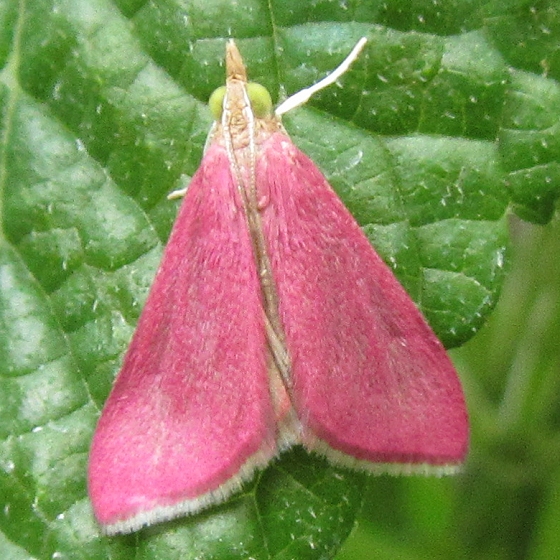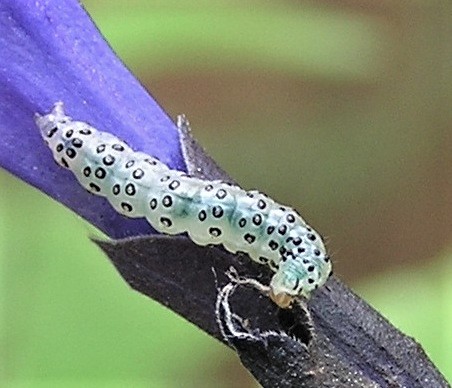Natter’s Notes
Jean R. Natter, OSU Master Gardener
As of early July 2020, there’s a new pest in town, and it goes by the name of Southern Pink Moth, alias Pyrausta inornatalis. The adult moth, found in SE Portland and submitted to the Oregon Department of Agriculture (ODA) was soon declared a new record for Oregon.
Less than two weeks later, a person from Milwaukie submitted an inquiry to Ask an Expert about a small pink moth resting on a salvia leaf in their garden. Its ID was soon verified as a Southern Pink Moth.

https://bugguide.net/node/view/1526170/bgimage)
Normal distribution of the Southern Pink Moth is across the southern states, and are most common in the southeast. On the west coast, only four other specimens have been documented, those from Southern California.
Precious little info is available about this small pest. The only official details I was able to locate stated that the adult moth is about a half-inch long, with a wingspread of 13mm. The forewings are reddish-pink, the hindwings fuscous (brownish gray) and fringed. In the southern states, the adults fly March to November. The larvae bore into salvia flowers and flower buds.
Comments on a garden forum described the larvae is small (about a half-inch), almost translucent, and marked with dark dots. The larvae bore into the base of salvia flowers and flower buds. (As a result, they can be classified as budworms, and will annoy gardeners just as much as do the familiar geranium- and petunia-budworms.) Each pupa is in a filmy cocoon attached to the plant.

Bacillus thuringiensis (Bt) can be used effectively against budworms but timing is critical. One must apply Bt as soon as the first flower buds are damaged. Better yet, apply Bt as the eggs start to hatch such that Bt-coated tissue will be the caterpillars first bite. Unfortunately, Bt degrades quite rapidly when exposed to sunlight, so repeat applications may be needed. Fortunately, Bt targets caterpillars without damaging other insects.
A more direct control method is to check buds for tiny holes and then removing (or squishing) those that are infested. Other times, the caterpillar will still be on the outside of the bud. Cold winters are believed to kill the pupae, with temperatures of 20F or less able to reduce the next season’s population.
No control guidelines have been issued by ODA or OSU as yet. But since this is a newly introduced species, ODA would be interested in any reports and locations so that they can map the spread of this species. Contact ODA at 503-986-4636.
Resources
The Canadian Entomologist” – https://archive.org/stream/canadianentomolo17ento#page/57/mode/1up
BugGuide: Images of adults, larvae and pupae – https://bugguide.net/node/view/81627
Multiple images at “Butterflies and Moths of North America” – lg larva https://www.butterfliesandmoths.org/species/Pyrausta-inornatalis
Discover Life: Images adults (resting and pinned), also a distribution map – https://www.discoverlife.org/mp/20q?search=Pyrausta+inornatalis&mobile=close&flags=glean:
BugGuide – image of adult https://bugguide.net/node/view/1526170/bgimage
BugGuide – image of larva https://bugguide.net/node/view/229077/bgimage
